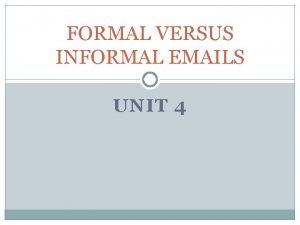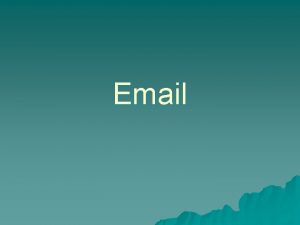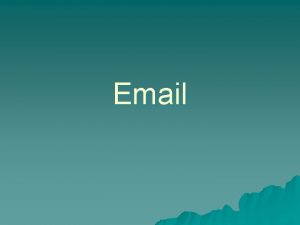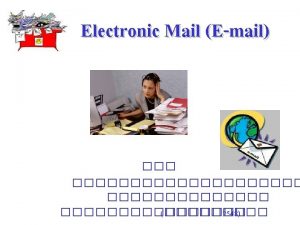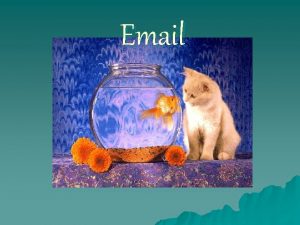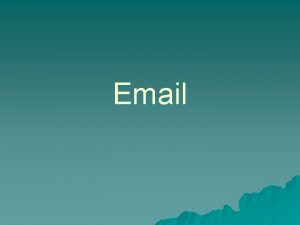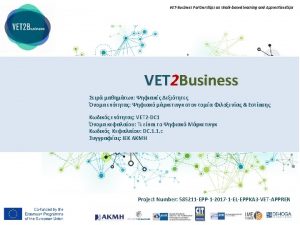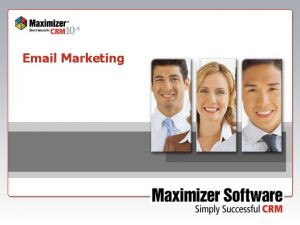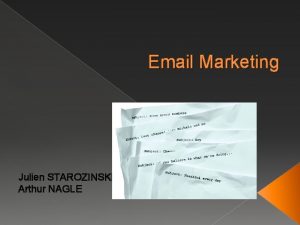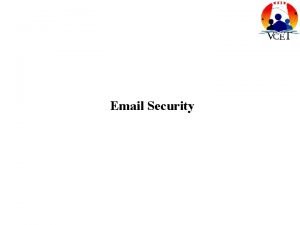Email Marketing What is marketing Marketing is the










- Slides: 10

E-mail Marketing What is marketing? Marketing is the art and science of management process through which goods and services move from concept to the customer. It includes the coordination of four elements called the 4 P's of marketing.

Email marketing • • • The 4 P’s. They are : Product, Price, Place and Promotion. Identification, selection and development of a product, Determination of its price, Selection of a distribution channel to reach the customer's place, and • Development and implementation of a promotional strategy.

Email marketing: • Email marketing is a powerful vehicle that enables you to cost-effectively communicate with your market in a way that’s immediate and relevant. • Email marketing has been a staple for consumer marketers since the mid-90 s. A few years later, B 2 B (Business to Business) marketers discovered its value, and email campaigns have become an important tool for businesses in all stages and industries.

Email marketing • Through this powerful tool one can perform wonders. Such as: • Nurture leads • Build brand awareness • Obtain prospects • Build customer loyalty • Generate sales

Email Marketing • You can usually launch a campaign and measure your results fairly quickly, making email a great option for time -sensitive programs. It’s easy and inexpensive to test different aspects of your campaign on a segment of your list, so you can hone your creative and your offer to generate the best possible results.

There are three examples of when to use email marketing campaigns GENERATE NEW LEADS DIRECT SALES Buy or rent a list and send a short, compelling message to generate interest in your product. Drive prospects to a special page on your website to download a white paper, a demo or other offer. Capture basic information and follow up via phone several days later. BUILD BRAND AWARENESS Use email to keep in touch with prospects and customers. Buy or rent a subscriber list or send the campaign to your current prospects and customers. Compel them to click to your website to learn and buy. Deliver timely, valuable information that makes them want to read your messages. Add news about your company, special offers, etc. , but focus on content and information rather than pure sales.

• Email marketing is more editorial than advertising, and it’s powerful because it can support and even drive a sales process. Yet like any medium, it has its challenges. Business people get hundreds of emails (or more) each day, so you’ll need to get your message past spam filters and give them a reason to read. You’ll also need a strong offer, valuable editorial content, appropriate design and a good fulfillment and measurement process. • You can reach a wide audience with email, but that doesn’t mean you should. It’s most effective when you really target so you can speak to specific needs. Think of it as a one-to-one communication – personalized, relevant, timely – not a blast

Choosing the right path: • If you’ve never launched an email campaign, you’ll probably need to use an email service provider (ESP), typically a webbased service. Choose a reputable ESP to help you stay compliant with spam legislation and get your messages to your prospects’ inboxes – a major issue in email marketing. A good ESP can raise your delivery rate, manage your opt-in and optout process, keep your email list clean and provide reports that can help you improve your results. •

• Who is our target customer and how to grab attention? • Few people want to read emails that look and feel like ads. Instead, offer information that’s relevant to your recipients. It’s an investment to develop that content, but it’s the content that gets people to open your messages and continue to read them over time.

Points to remember: • Develop a tangible objective – for example, to generate a specific number of leads, demo requests, meetings, or purchases. • Profile and target your audience. You can reach a large audience through email, but that doesn’t mean you should – narrow targeting means you can speak more directly to their needs. • Create a good offer and compelling call-to-action, and present it early in your message readers skim. • Plan a series of emails to create an ongoing campaign – it takes multiple touches to generate response. • Don’t forget fulfillment – if your prospects expect a phone call or email, deliver it quickly or you could lose their interest.
